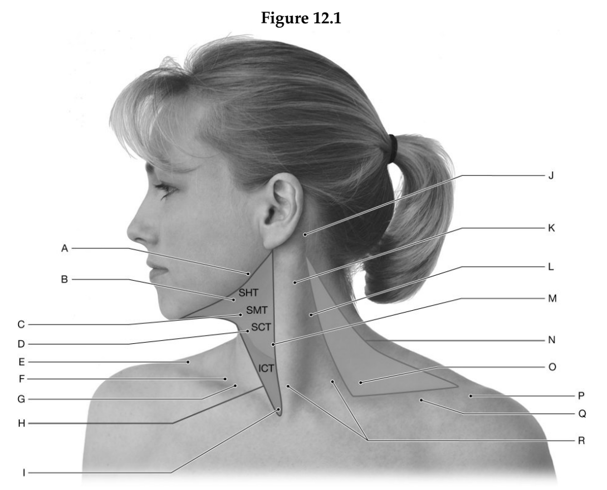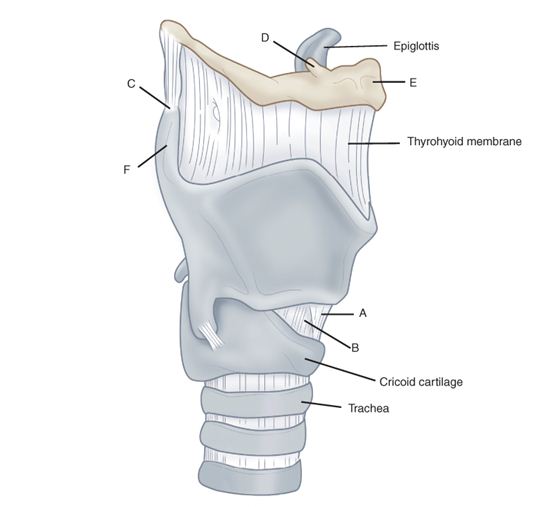Using the figure above, identify the labeled part.

1. Label A: ______________________________
2. Label B: ______________________________
3. Label C: ______________________________
4. Label D: ______________________________
5. Label E: ______________________________
6. Label F: ______________________________
7. Label G: ______________________________
8. Label H: ______________________________
9. Label I: ______________________________
10. Label J: ______________________________
11. Label K: ______________________________
12. Label L: ______________________________
13. Label M: ______________________________
14. Label N: ______________________________
15. Label O: ______________________________
16. Label P: ______________________________
17. Label Q: ______________________________
18. Label R: ______________________________
1. Angle of mandible
2. Site for palpation of submandibular gland and submandibular lymph nodes
3. Hyoid bone
4. Thyroid cartilage
5. Trapezius muscle
6. Supraclavicular fossa
7. Omohyoid muscle
8. Anterior cervical triangle
9. Jugular notch
10. Mastoid process
11. Sternocleidomastoid region
12. External jugular vein beneath platysma muscle
13. Site for palpation of carotid pulse
14. Posterior cervical triangle
15. Location of brachial plexus
16. Acromion
17. Clavicle
18. Sternocleidomastoid muscle (clavicular head [lateral] and sternal head [medial])
You might also like to view...
During this period, a second action potential can only be initiated by a larger than normal stimulus
a) Latent period b) Absolute refractory period c) Relative refractory period d) All of these choices e) None of these choices
Define antibodies
What will be an ideal response?
Identify the following

The fastest muscle contraction would be produced by a:
A) type IIa fiber. B) type III fiber. C) type IIx fiber. D) type I fiber.